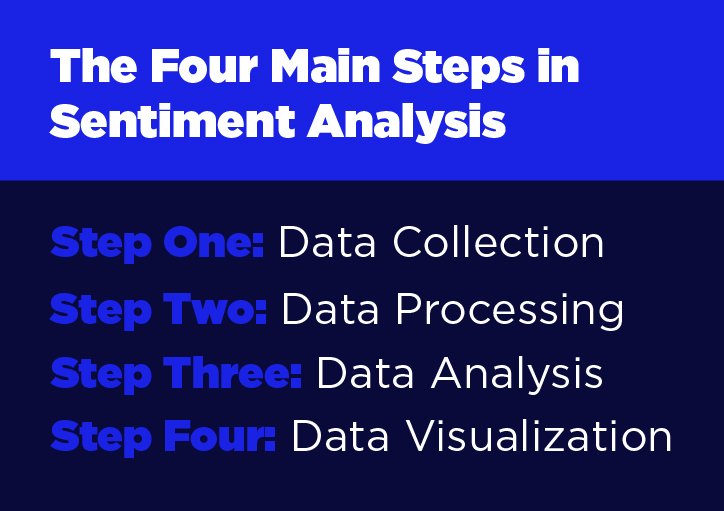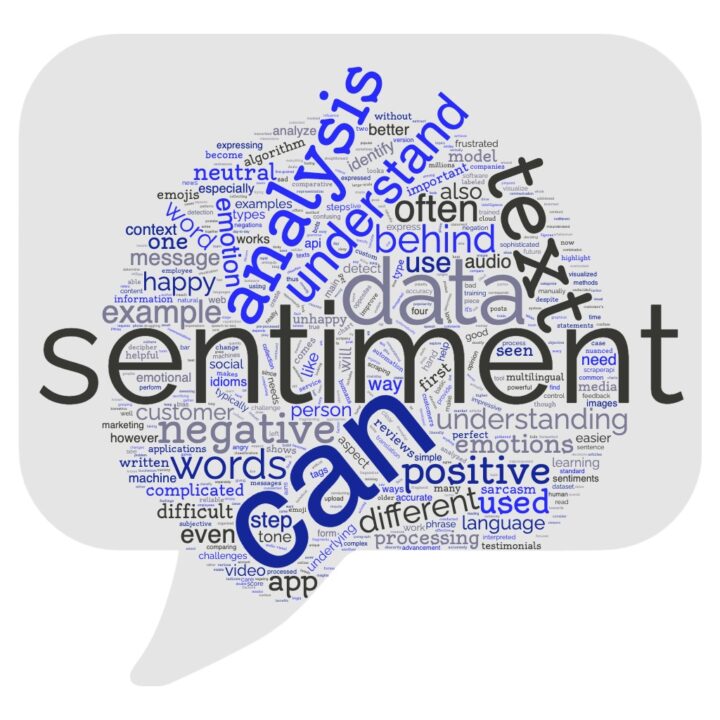We live in a world of ambiguity. Messages are often sent without the true intent or emotion behind them. This can be seen in our day-to-day interactions, as well as in large-scale communications such as those between businesses and customers. It’s one of the main reasons why we often misunderstand each other.
Thus when you see a message, what is the sentiment behind it? Is the author happy, sad, angry, or frustrated? Obscurity in messages and written content can be difficult to decipher sometimes. But what if there was a way to understand the emotional aspect behind a message?
With sentiment analysis, you can understand the emotional aspect behind the message. In this blog post, we’ll explore what is sentiment analysis and why is it so important.
What is Sentiment Analysis?
Sentiment Analysis, also known as opinion mining or emotion AI, refers to the use of natural language processing, text analysis, computational linguistics, and biometrics to systematically identify, extract, quantify, and study affective states and subjective information.
In simple terms: It is a method of understanding the emotions behind a piece of text. The text can be anything from a sentence, paragraph, article, or even an entire book.
It is an automation that uses natural language processing (NLP) to determine the emotional tone behind words. Automation is conducted by AI bots who are trained in reading and understanding millions of texts to identify the emotional tone behind the text, that is, positive, neutral, or negative.
These AI bots work by fragmenting the text into tiny pieces and then giving a sentiment score to each fragment. After that, they piece together these fragments to build up an understanding of the sentiment in the text as a whole.
How Does Sentiment Analysis Work?
Deciding if the analyzed text has a negative, positive or neutral tone can be difficult. This is because human language is complicated, and there are many ways to say the same thing.
For example, the phrase “I’m not happy” can be interpreted as having a negative sentiment. But if you change the context, such as in the phrase “I’m not happy with the results of the election,” the sentiment becomes more positive.
This is where machine learning comes into play. Machines can be trained to read and understand millions of texts to identify the sentiment behind them.
Unlike humans who agree with each other 80% of the time, machines can achieve up to higher accuracy that will only improve over time.
The Four Main Steps in Sentiment Analysis

To understand the different applications of sentiment analysis, we first need to understand the four main steps involved in sentiment analysis:
Step One: Data Collection
To conduct sentiment analysis, you first need a dataset. This dataset should be gathered and labeled correctly so that the machine learning algorithm can learn from it.
After collecting the data, you can upload the API data through Live APIs for social media. For example, you can use the Twitter API to collect tweets. Or a News API can gather news articles from around the web.
If you are using a CRM tool for data collection, you can manually upload is it to the API as a .csv file.
Step Two: Data Processing
After the data is collected, it needs to be processed. However, data processing mostly depends on the type of data being processed. Images, text, audio, and video all require different types of processing.
For instance, For audio and video such as YouTube videos, first, the data must be transcribed into text using a speech-to-text converter. This will ensure that no data is left out and that the sentiment analysis algorithm can understand the text.
On the other hand, for text analysis approaches such as social media posts or online reviews, data processing is a bit different. The text needs to be cleaned and formatted so that the machine learning algorithm can read it.
Step Three: Data Analysis
In this stage, various steps are taken to understand the data and find patterns.
Training The Model
The first step is to train the machine learning model with pre-processed and manually labeled data. This is so that the model knows what to look for, and be able to identify, compare and classify different types of data.
Multilingual Data
Since sentiment analysis deals with a lot of text, it is important to be able to analyze multilingual data. This way, you can understand the sentiment of a text written in any language without sacrificing its meaning due to poor translation.
Custom Tags
After completing the training of the model, you can also create custom tags. These tags will help you better understand your data and make it easier to categorize the text data.
Topic Classification
Here, the model classifies the text into different topics. This is helpful in understanding what the text is actually about and makes it easier to identify the sentiment of the text.
Sentiment Analysis
After which, each aspect is analyzed separately to pinpoint their sentiment. Then, each is given a sentiment score that ranges from -1 to +1 with neutral sentiments being 0.
Step Four: Data Visualization
In the final step, the data is visualized to create insights and help make better decisions. The data can be visualized in a variety of ways such as tables, charts, and graphs.

One of the most popular ways to visualize sentiment data is through a word cloud. A word cloud is a graphical representation of the most common words used in a text. The size of the word corresponds to how often it is used in the text.

Another way to visualize sentiment data is through a bar chart. A bar chart can show the overall sentiment of a text as well as the sentiment of each aspect.
Challenges to Sentiment Analysis
While sentiment analysis is a powerful tool, it’s not a perfect system and it comes with it’s own challenges, such as:
Tone
The tone of a text can be hard to decipher, both verbally and in written form. With that said, the footing for good sentiment analysis applications is to discern objective statements from subjective ones.
Polarity
Sentiment does not only factor in opposites such as “good” and “bad” or “happy” and “sad”. Some sentiments are in the middle of these two opposites such as “average”, “okay” or even “not so bad”.
With sentiment analysis applications, you can highlight these complex statements with context.
Sarcasm
Sarcasm and irony have become a mainstay of internet humor, especially with the rise in the popularity of memes. Naturally, it can be difficult for sentiment analysis software to detect sarcasm, especially without context. Thus, the first step to solving this problem is to not only understand the sentiment behind the message but also highlight the true context of the message.
Emojis
Emojis have also become a staple for expressing yourself, especially on social media. However, while emojis can often be used to express the sentiment of a message, they can also be used to hide the sentiment of a message. For example, the use of a smiley face emoji can often be used to downplay a negative sentiment.
Sentiment analysis can grasp the emotion behind images, and emojis are a language in and of themselves.
Idioms
Idioms are often used to express a sentiment but can be difficult to translate literally. Therefore, when idioms, expressions, or figures of speech are used in testimonials and reviews, they can be overlooked by the sentiment analysis software.
Negations
Examples of negations are words like “not”, “didn’t”, and “doesn’t”. These words often confuse the sentiment analysis algorithm especially when double negation is used. For example, the phrase “I am not unhappy” can be interpreted as either positive or negative sentiment.
Comparative Sentences
It’s tricky to understand the emotion behind a comparative sentence. This is simply because with comparing, there are no positive or negative feelings behind it. Rather, it’s a statement of fact. For example, “This phone is better than the other one” doesn’t provide any sentiment whatsoever.
Employee Bias
In some cases, employees are asked to leave reviews or testimonials about their company to influence change in their work culture and goals. However, while employee feedback is beneficial, companies need to be wary of any bias, which can come from both parties and can result in the feedback being disregarded.
Multilingual Sentiment Analysis
When you perform sentiment analysis, it’s important to consider the different languages that are being used. This is because each language has its unique grammar, idioms, and words that can often be lost in translation. All of these can pose a challenge when conducting sentiment analysis.
Audio-Visual Data
Not all data is in written form, some of it is in audio or visual form. This can be a challenge for sentiment analysis because it’s often difficult to analyze all aspects of the video. This includes the audio, images, and even the comments left by viewers. To solve this, companies often use a combination of text analysis, audio analysis, and video analysis to get a more accurate understanding of the sentiment.
Sentiment Analysis Example
Grasping a few examples of sentiment analysis will give you a better understanding of how it works. Here are a few examples of different types of sentiment analysis and their underlying sentiment.
Standard Sentiment Analysis
This is one of the most common types of sentiment analysis and is often used to analyze social media posts, reviews, and testimonials. It’s a straightforward process that looks at the text and determines if it’s positive, negative, or neutral.
Here is an example of standard sentiment analysis and its underlying sentiment:
“I love how simple this app is.”
This is a simple, positive sentiment. It’s easy to see that the sentiment is positive because of the use of the word “love”.
“I am not sure if I like this app, I need to keep trying it out.”
This is a more complicated sentiment because of the negation. In this case, the sentiment is neutral because the person is undecided.
“This app is way too confusing and complicated for me.”
This sentiment is negative because of the use of words like “confusing” and “complicated”. These are typically seen as negative words when it comes to basic sentiment analysis.
Fine-grained Sentiment
This type of sentiment analysis is more nuanced and looks at the different emotions that are being expressed. For example, instead of having a clear sentiment of being sure, you have to also understand the underlying context and emotions.
“The older version was more sophisticated.”
The sentiment here is negative, even though the words “sophisticated” and “more” are typically seen as positive. This is because the person is comparing it to the older version, which they liked more.
“I’m not unhappy.”
This sentiment is positive, even though the word “unhappy” is typically seen as negative. This is because the person is negating the word, which changes the sentiment. It shows that the customer is content and not unhappy.
“I’m so happy that I can’t even put it into words.”
This sentiment is extremely positive because of the use of words like “happy” and “even”. This shows that the person is very happy and they are struggling to find the words to express it. This is a clear example of how sentiment analysis can be more nuanced and difficult to understand.
“I don’t really care for this app.”
Despite the negative words, “don’t”, “really”, and “care”, this sentiment is neutral. This is because the person is expressing that they don’t have a strong opinion one way or the other. They are indifferent to the app.
Emotion Detection
Emotion detection is a type of sentiment analysis that focuses on understanding the emotions that are being expressed. When you perform sentiment analysis in marketing and customer, it offers a ton of benefits in understanding the customers’ emotions and needs towards your product. Here are a few examples to understand how this works.
“This app makes it easier for me to organize my day.”
The sentiment here is positive because of the word “easier”. But, it’s also helpful to understand the underlying emotion. In this case, the person is expressing that they feel happy since they are more organized and in control. This is a helpful sentiment for customer service and even marketing to understand.
“I’m so frustrated with this app, it never works the way I want it to.”
The sentiment here is negative because of the word “frustrated”. Despite this, let’s delve further into understanding the customer’s emotions. This example shows that the customer is angry and feels like they are not in control. Your team can utilize this information to help fix this specific issue so that it works better for the customer.
“What else can this app do?”
The sentiment here is neutral but the emotion is curious. The customer wants to know more about the app and its capabilities. This is a good opportunity for customer service or marketing to provide more information.
Sentiment analysis is a complicated process that requires taking many different factors into account. The sentiment of a text can often be different than what the words themselves seem to indicate. This is why it’s important to use multiple methods to analyze sentiments, such as text analysis, audio analysis, and video analysis.
The Future is Here! Powerful AI Can Now Detect Emotions in Data
The advancement of artificial intelligence has been rapid and impressive. We’ve seen AI do everything from beat humans at complex games to drive cars. And now, AI can detect human emotions with impressive accuracy.
Basic sentimental analysis has been developed to accurately detect sentiment in text. However, these methods are not perfect and there are still many challenges that need to be addressed as sarcasm, emoji and other forms of communication can be misinterpreted.
But the future is looking bright for sentiment analysis. With the continued advancement of AI, we can only expect that sentiment analysis will become more accurate and reliable.
Web scraping and data analysis go hand in hand. With ScraperAPI, you can get accurate and reliable data that you can use to improve your sentiment analysis. ScraperAPI is one of the best web scraping tools on the market and it’s perfect for sentiment analysis. Try it out today!



